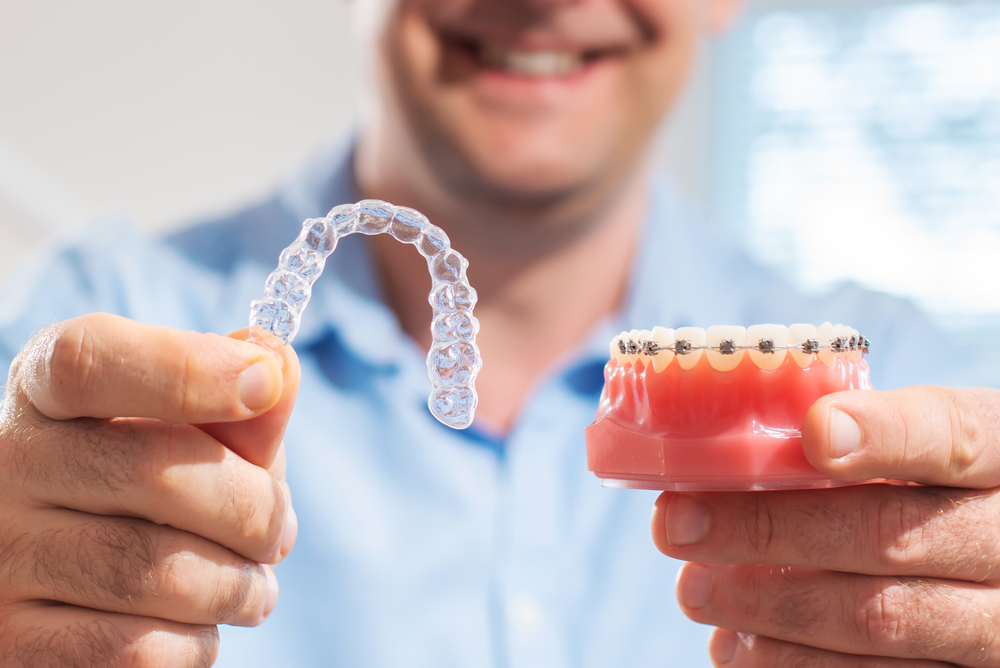Nurturing Gum Health: A Comprehensive Guide to Gingivitis and Orthodontics
Gingivitis, an early stage of gum disease, can profoundly impact oral health. This blog post explores the intricate relationship between gingivitis and orthodontics. We’ll look at how orthodontic issues can influence gum health and provide valuable insights into effective preventive measures and management strategies.
What is Gingivitis and How Does It Develop?
Gingivitis, characterized by inflammation of the gums, is a common oral health issue caused by the accumulation of plaque—a sticky film of bacteria—on teeth and gums. It can develop from:
- Poor oral hygiene
- Inadequate brushing and flossing
- Smoking
- Certain medical conditions
When left untreated, gingivitis can progress to more severe forms of gum disease, impacting overall oral health.
Orthodontic Issues and Their Impact on Gum Health
Orthodontic problems, such as misaligned teeth or malocclusion, can create challenges for maintaining optimal gum health. Irregular tooth positioning makes it harder to effectively remove plaque through regular oral care practices, increasing the risk of gingivitis. Additionally, orthodontic appliances like braces or Invisalign may create areas where plaque can accumulate, necessitating extra attention to prevent gum issues during treatment.
The Importance of Oral Hygiene during Orthodontic Treatment
Maintaining a high standard of oral hygiene is paramount, especially for individuals undergoing orthodontic treatment. Braces and Invisalign create additional surfaces for plaque to cling to, making it crucial to adopt meticulous oral care practices to prevent the onset or progression of gingivitis.
Daily Oral Care with Braces or Invisalign


Orthodontic appliances require a modified oral care routine. With braces, it’s essential to use a soft-bristled toothbrush and specialized tools like interdental brushes or floss threaders to clean between wires and brackets. Invisalign wearers benefit from removing aligners before brushing and flossing their teeth as part of their daily routine.
The Role of Orthodontic Appliances in Gingivitis Prevention
While orthodontic interventions, like braces, require modified oral hygiene practices, the treatment itself plays a dual role—it helps achieve proper tooth alignment and contributes to gingivitis prevention. By aligning teeth correctly, orthodontic therapies reduce the risk of gum inflammation and make it easier for individuals to maintain optimal oral hygiene in the long run.
Regular Dental Check-Ups and Cleanings
Regular dental check-ups and cleanings are crucial for individuals undergoing orthodontic treatment. Dentists can monitor gum health, identify early signs of gingivitis, and provide professional cleanings to remove plaque and tartar, ensuring the overall health of gums during orthodontic care.
Gingivitis Management and Orthodontics
Orthodontic treatments, such as braces or aligners, can sometimes pose challenges for individuals who already have gingivitis. However, with proper collaboration between orthodontists and dentists, accommodations can be made to ensure effective gingivitis management while undergoing orthodontic treatment.
Oral Hygiene Education
Dentists and orthodontists can provide patients comprehensive education on maintaining good oral hygiene during orthodontic treatment. This education includes proper brushing and flossing techniques, as well as guidance on using tools like interdental brushes or water flossers to clean between teeth and around braces or aligners. Maintaining a clean mouth is essential for preventing gingivitis.
Specialized Cleaning Tools
Individuals with gingivitis may be provided with specialized cleaning tools tailored to their specific needs. These tools can include soft-bristle toothbrushes, antimicrobial mouth rinses, and dental picks that are gentle on inflamed gums. Orthodontists and dentists can recommend and provide these tools to help patients effectively manage their oral hygiene.
Frequent Dental Checkups
Close collaboration between orthodontists and dentists involves scheduling regular dental checkups during orthodontic treatment. These appointments allow dentists to closely monitor the patient’s gingivitis status and make necessary adjustments to their oral care routine or orthodontic treatment plan. Early detection and intervention can help prevent the worsening of gingivitis.
Treatment Adjustments
Orthodontic treatment plans can be adapted to accommodate gingivitis. This may involve modifying the positioning of braces or aligners to reduce friction and irritation on the gums. In some cases, temporary removal or replacement of orthodontic appliances may be considered to provide better access to the gums for cleaning and treatment.
Periodontal Treatment
For individuals with more severe gingivitis or gum disease, periodontal treatment may be integrated into their orthodontic care plan. This can include scaling and root planing, gum pocket reduction surgery, or the use of antibiotics to manage gum infections. Orthodontists and dentists work together to coordinate these additional treatments as needed.
Nutrition and Diet: Good Practices for Gum Health


Diet plays a pivotal role in gum health. A balanced and nutrient-rich diet supports overall oral health while avoiding sugary snacks and beverages helps prevent plaque buildup. Individuals undergoing orthodontic treatment should be mindful of food choices to maintain both gum and appliance health.
Lifestyle Adjustments and Self-Care
Lifestyle adjustments, including stress management and cessation of smoking, can positively impact gum health during orthodontic treatment. Self-care practices contribute to an overall healthy lifestyle, minimizing the risk of gingivitis.
Orthodontic Consultation and Gingivitis Assessment
When embarking on the journey of orthodontic treatment, the first step is consultation. This initial meeting involves a comprehensive assessment not only of the teeth but also of the overall health of the gums. It is during this stage that orthodontists collaborate closely with dentists to ensure a holistic evaluation of the patient’s oral health.
One of the primary goals of this assessment is to identify any existing signs of gingivitis or other gum-related concerns before initiating orthodontic treatment. The evaluation may include a workup of your patient history, a manual examination, and x-rays or other digital scans.
Common Myths and Misconceptions
Dispelling common myths and misconceptions about oral care during orthodontic treatment is essential. Addressing concerns such as difficulty in cleaning with braces or the impact of orthodontic appliances on gingivitis helps individuals make informed decisions about their oral health.
Myth: It’s impossible to clean teeth properly with braces.
While it can be more challenging to clean teeth with braces due to the presence of wires and brackets, it is by no means impossible. Proper oral hygiene techniques and the use of specialized cleaning tools can help maintain good dental hygiene during orthodontic treatment. Orthodontists and dentists can provide guidance on effective cleaning methods.
Myth: Orthodontic treatment causes gingivitis or worsens existing gum problems.
Orthodontic treatment itself does not cause gingivitis. However, it can create an environment where proper oral hygiene becomes more crucial. If patients do not maintain a strict cleaning routine, there is a risk of gingivitis developing or worsening. Close collaboration between orthodontists and dentists can help prevent and manage gingivitis effectively during treatment.
Myth: Orthodontic treatment is only for cosmetic purposes.
While orthodontic treatment does often result in a straighter, more aesthetically pleasing smile, its benefits go beyond cosmetic improvements. Correcting misaligned teeth can improve oral function, enhance speech, and prevent long-term dental health issues like excessive wear, jaw problems, and periodontal disease.
Finding the Right Orthodontist for Gingivitis Concerns
Navigating the intersection between gingivitis and orthodontics requires diligence, collaboration, and a commitment to comprehensive oral care. By understanding the dynamics of gingivitis development, adopting tailored oral hygiene practices, and seeking professional guidance, individuals can embark on their orthodontic journey with confidence, knowing that optimal gum health is an achievable goal.
Choosing the right orthodontist is critical for individuals with gingivitis concerns. At Aurora Orthodontics, we’re here to ensure a well-rounded approach to orthodontic care. Reach out to us today to book an appointment.

